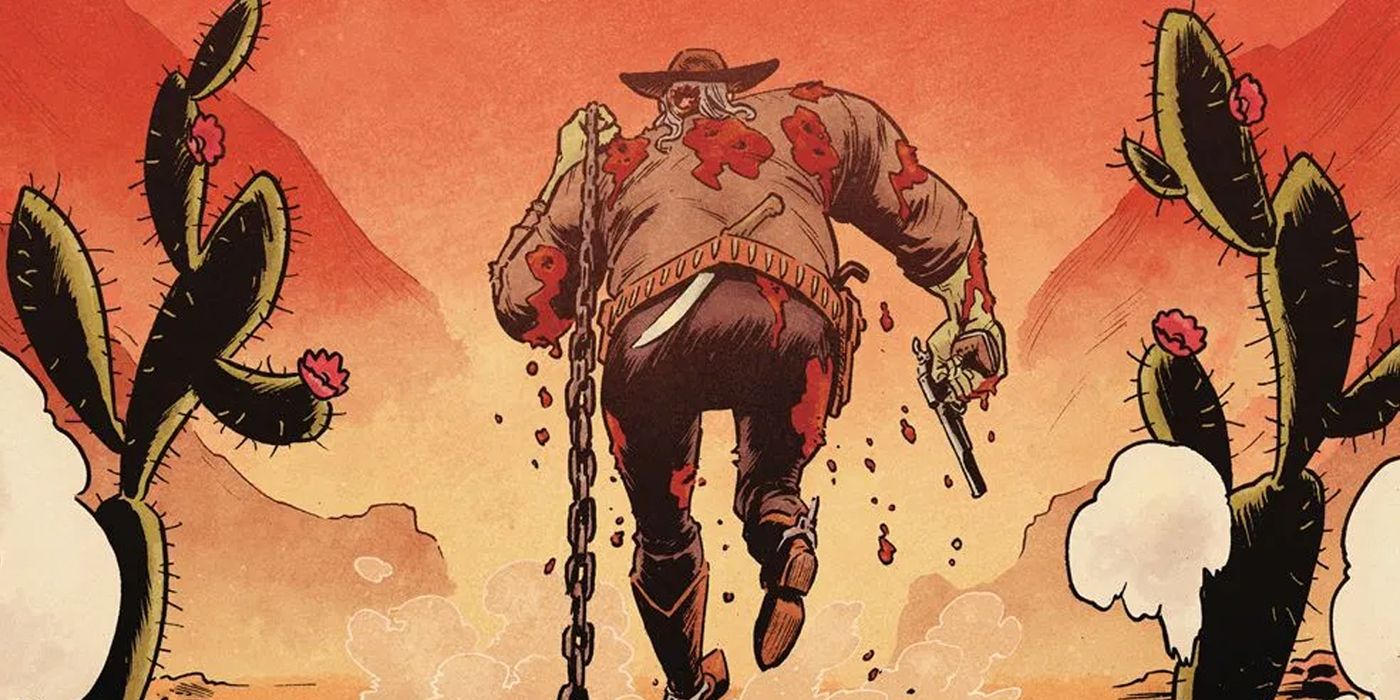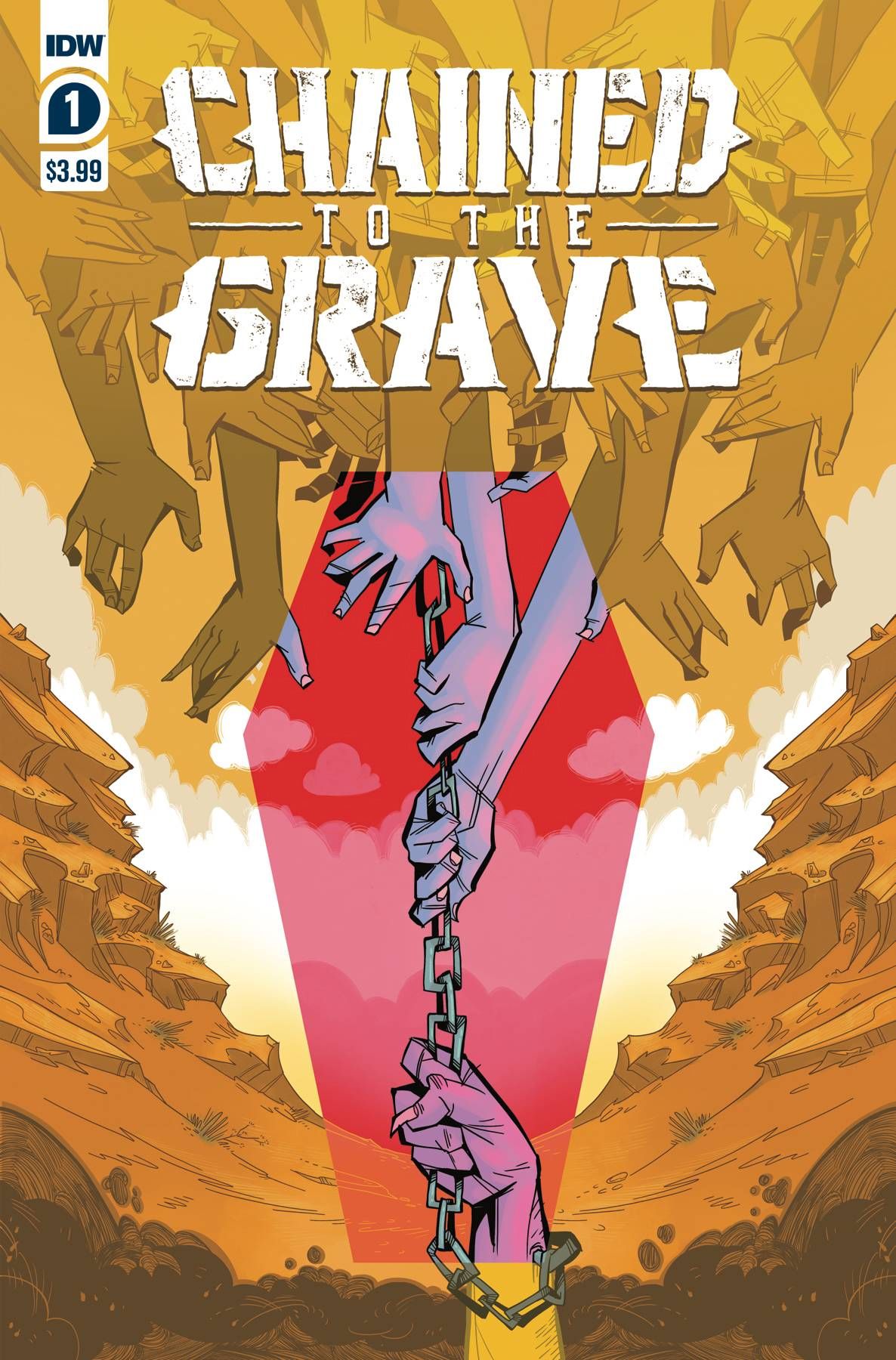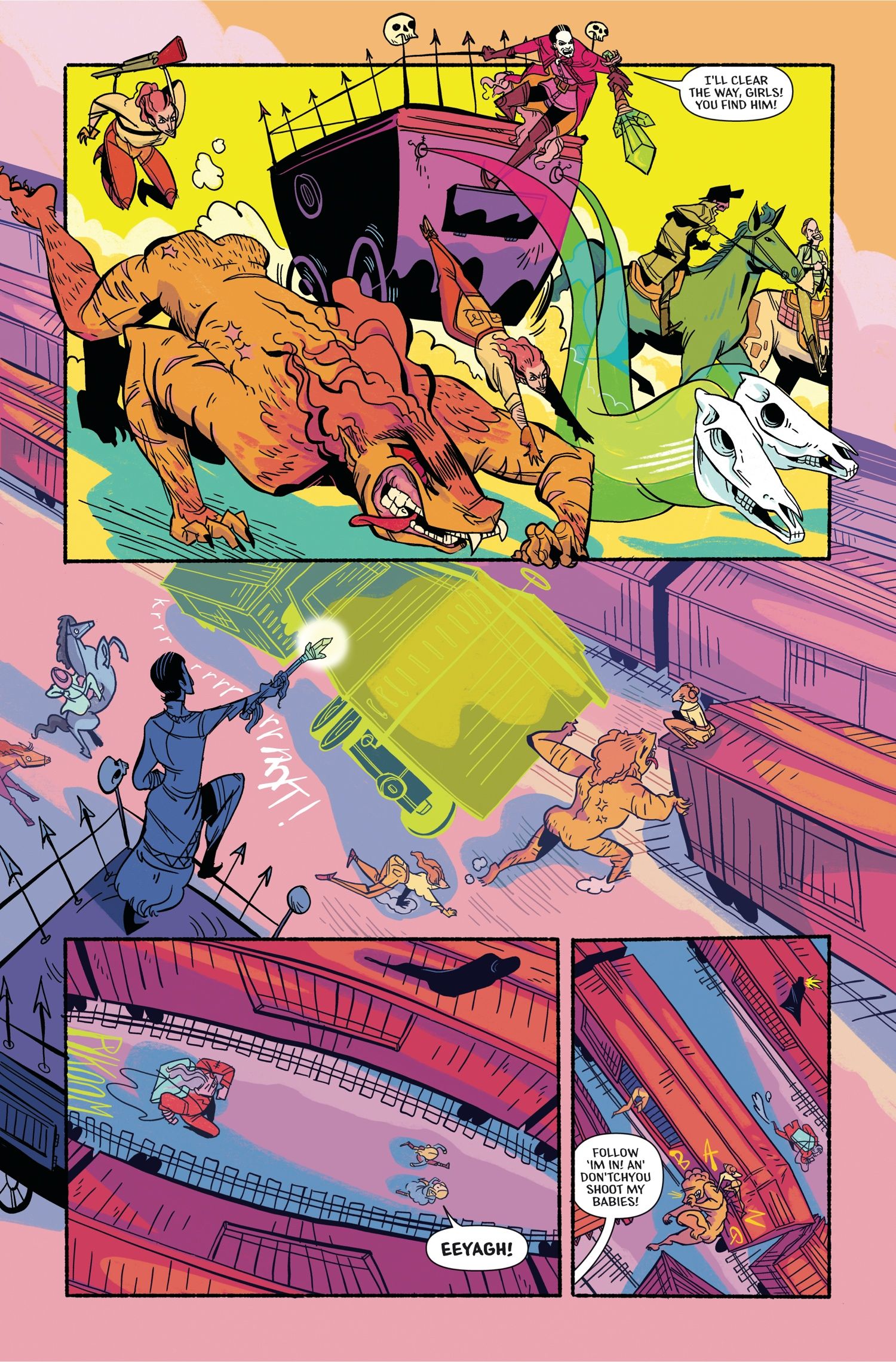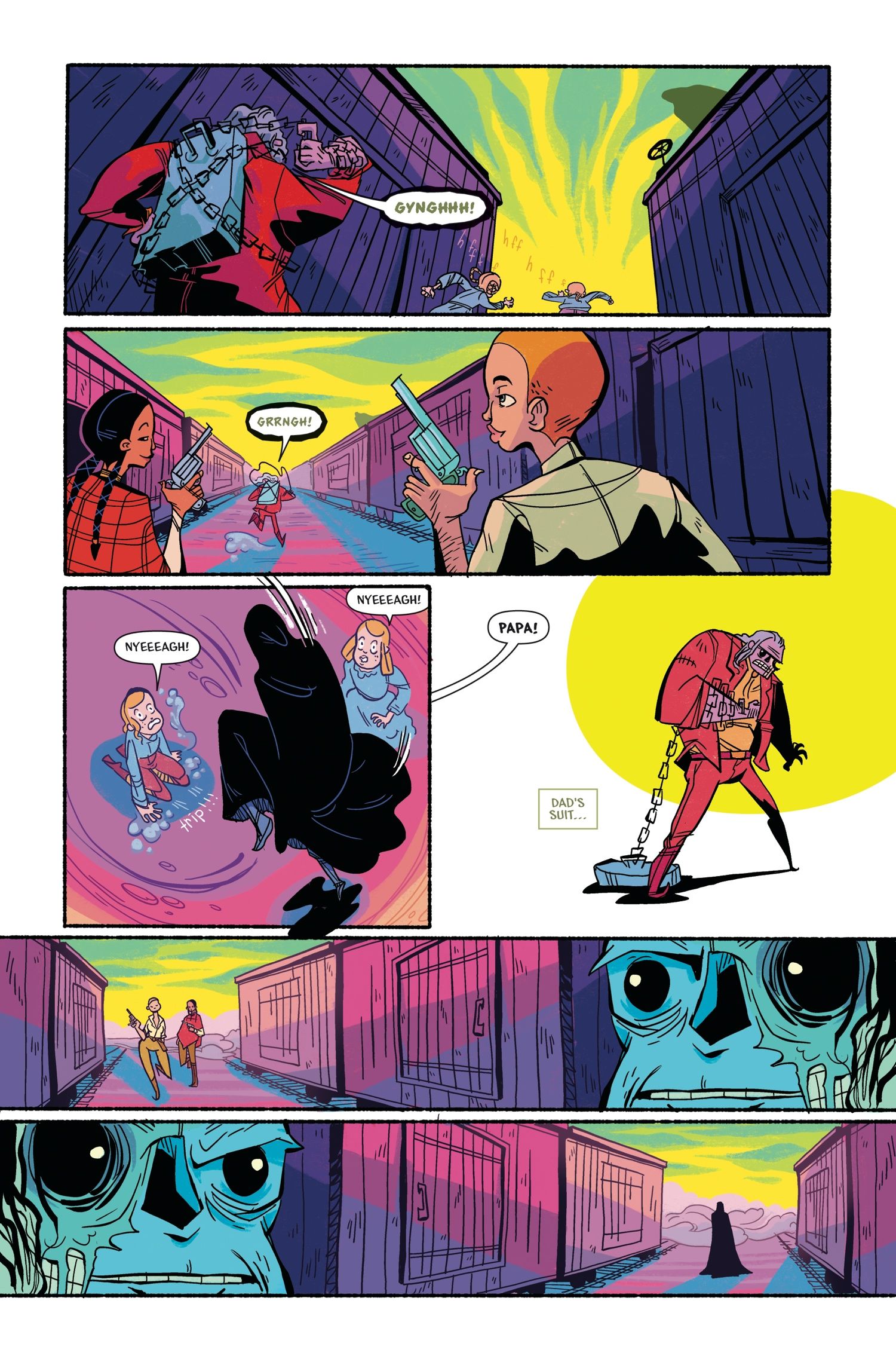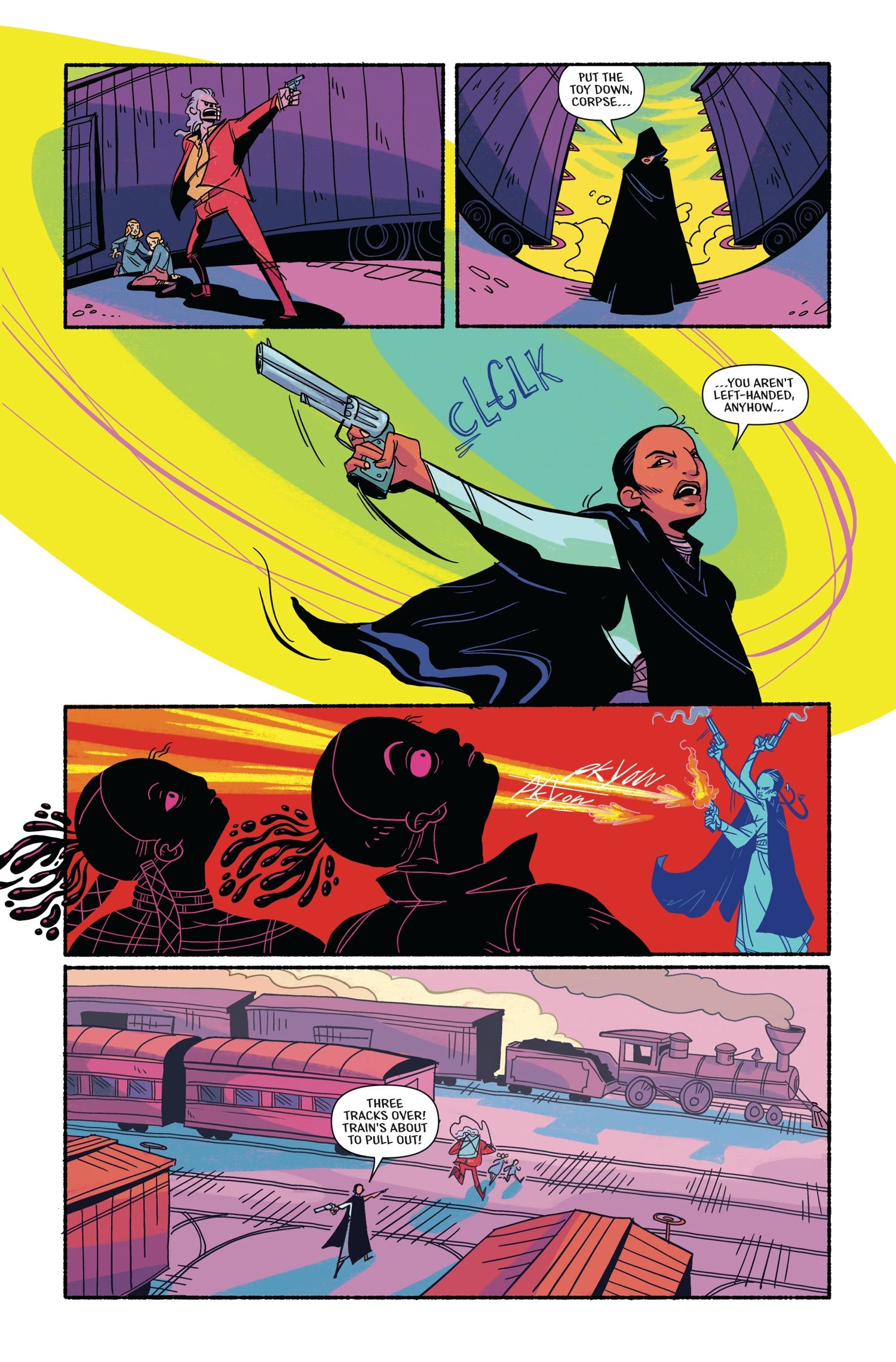IDW Publishing's new miniseries Chained to the Grave is a five-issue series that marries the western and supernatural genres. The comic follows an undead cowboy, Roy Mason, after he has been resurrected by his wife, through his supernatural journey through the wild west. The vibrant and unique story promises to be filled to the brim with nonstop Old West action, supernatural weirdness, intrigue, murder, and magic for mature audiences.
CBR spoke with the creative team of co-writers Brian Level (Darth Vader, Thanos, Deadpool) and Andy Eschenbach (Heavy Metal Magazine, Red Shoes) and artist Kate Sherron (Invader Zim, The Amazing World of Gumball) about how they crafted a supernatural take on the classic western.
CBR: What attracted you to combining the supernatural genre with a classic western story in Chained to the Grave?
Brian Level: Generally, I’m attracted to anything supernatural or things that “could be” supernatural. It typically makes its way into everything I do in some way or another. Ghosts, magic, gods, etc. Not to mention, a cowboy/outlaw who is back from the dead with scores to settle is just kinda rad. It seemed to be a great starting point. Then what spun out from there was so fun and exciting when we started creating the rules of the world of Chained it all just felt so natural. Hard to not be attracted to that! [Laughs]
Andrew Eschenbach: Probably lunacy. We were up late a lot of nights then.
What were some of the major influences during the writing of Chained to the Grave?
Level: I actually don’t recall Andy and I having much of a conversation regarding specifics as much as just discussion of the genre and its tropes and aesthetics. For me, I actually spent so much time riffing on and reacting to Andy’s ideas that I didn’t stop to think about specifics. I know there are some beloved things in my memory that likely manifest, but as far as genre specifics I can only really pinpoint Sukiyaki Western Django from Takashi Miike. That thing lives in my subconscious as the youngs say “rent-free.”
Eschenbach: During the plotting, Brian and I were influencing each other-- just getting hyped-up on whatever character or scenario we had thought up next. When I was scripting, even though the story is fantastical and nothing like my daily life, I was thinking of bad decisions, people who make them, and the wake of all of that, from examples in my life.
With the main character, Roy Mason, being revived from the dead. What do you think sets him apart from the typical undead character?
Level: He’s got an extremely complicated and conflicted personality that has next to nothing to do with his relationship to his rotting corpse. Also, he makes a great human-ish shield.
Eschenbach: He has to drag his own gravestone around like a ball and chain. He's also just as cognizant as he was alive, although much worse for wear physically, and he's back on his old bullshit right away.
What kind of research went into the types of magic in the story and the setting itself?
Brian Level: If I’m being real here, not a lot on my end. It’s such a fairy tale that barely flirts with history that it didn’t seem essential to nail everything down and ground it. There’s obviously some research on locations and social structures and such, but nothing comprehensive from me.
Andrew Eschenbach: I researched a lot about the West generally during "cowboy" times, read a bunch about Native Americans, and looked at photos of scenery-- trainyards, towns, and deserts, etc- - not so much to be particular or hyper-accurate, but to be respectful and get in a mood.
What would you say are some of the major themes that the series will follow in Roy's journey?
Level: Really, the problem with all “tough guys.” Not guys who are tough as much as… well, you know the type. The trail of burning stagecoaches and cold bodies and crummy legacies that they leave behind. This and what toughness really looks like in having to deal with those people. And there’s also a splash of redemption and family and the friends we made along the way sort of stuff sandwiched between bits of bloodshed and hairy wolfman asses.
Eschenbach: You can't avert your past, especially when you're a rotting corpse.
This story has one of the most vibrant color pallets of any Western story I have ever read, what made you want to approach this with colors that popped rather than the normal grit and grime we are accustomed to with westerns?
Kate Sherron: I love a good Western, but I hate grit and grime palettes. I appreciate them and they serve their purposes, but I'd rather not be tied down by them for five issues. When Andy and Brian came to me with a supernatural western, I latched on to the “supernatural” part, hard. The story goes to weird places and deals with weird folks, so why not soak the whole thing in weird colors?
When drawing Roy's chainlink to his tombstone, do you keep the count of links the same every time?
Sherron: [Laughs] Not in the least! Heck, I'm lucky if I draw it on the same hand from panel to panel! I’m not much of a stickler for continuity, sorry.
What kind of research did you do into the fashion of the era?
Sherron: I did the usual due diligence and used that as a springboard while allowing for some flexibility when it felt appropriate. The Big Bad’s main outfit is directly inspired by Buffalo Bill’s over-the-top get-ups, for example, but the Wolf Sisters got to sport period-inappropriate-for-women pants. And their brother wore none!
There are some absolutely incredible layouts and character designs through the debut issue. Was there a lot of collaboration on the style you were striving for with the book?
Sherron: The guys were the best collaborators I could ask for on this book. We chatted at the start of the project, then they stepped back and let me go buck wild. The worth of their trust in me as an artist is absolutely incalculable and it means the world to me.
Eschenbach: Brian and I knew what Kate was capable of art-wise, so we were happy to let her run with it. That's the best kind of collaboration. We did our work in a way that she could trust and then trusted her to do the same. Everything came out better for it.
Level: That’s all Kate! I did some basic character roughs for some good guys way early in the process, but she made it all go off of some basic descriptions. Layouts, we were completely hands-off! Kate’s supremely talented so there’s just nothing I could do to add to it. The overall style was also pretty much led by Kate. I think we had a conversation or two on the phone before starting, but she took it and ran and we couldn’t be happier. Same with Micah. We had a little talk but he just went off on the lettering. We’re so grateful for those two!

